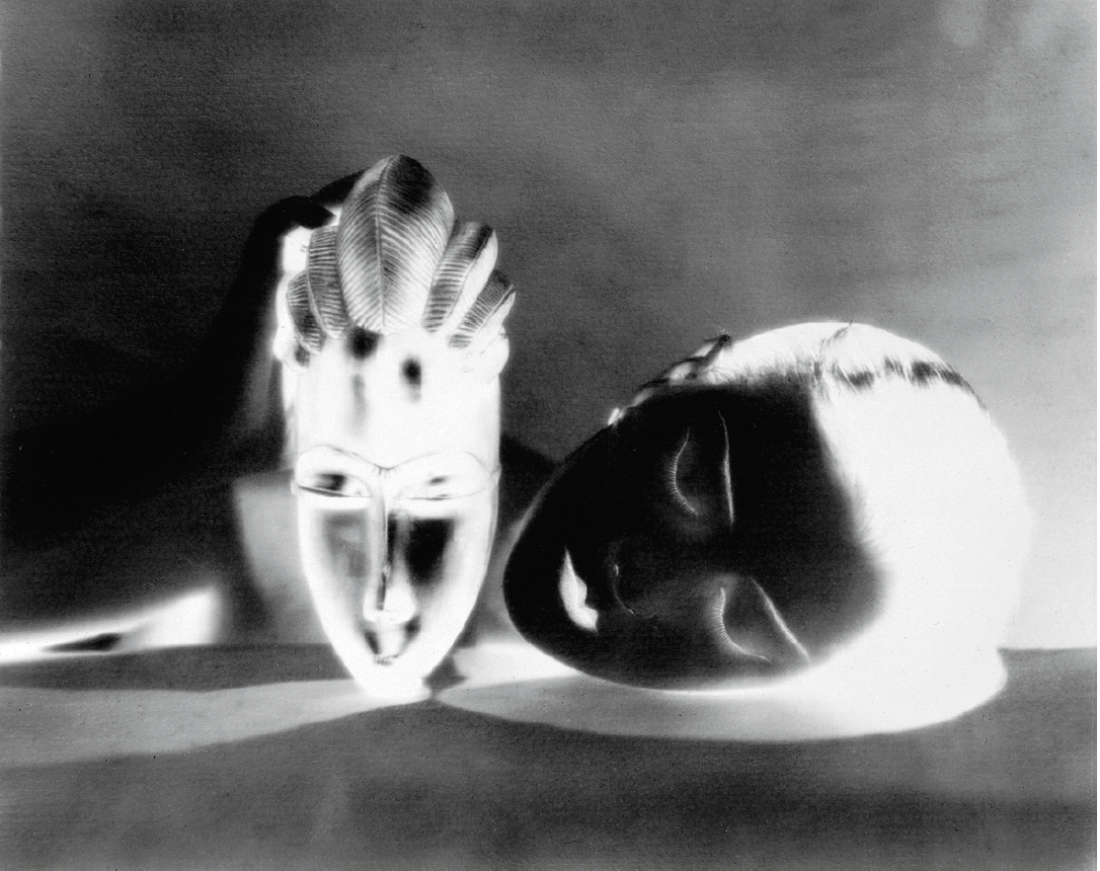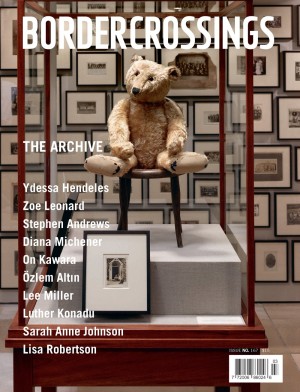“Man Ray, African Art and the Modernist Lens”
“Man Ray, African Art and the Modernist Lens” was a complex and provocative exhibition. Among other themes, it examined the impact of early Modernist photographs of non-Western, pre-industrial art—what was then seen as “primitive art”—on Western cultural perceptions. Such photography, this travelling show argued, “elevated the status of African artifacts from ethnographic objects to works of fine art.” Most exciting about the show was the way original black-and-white prints of African figures, masks and ornaments were physically juxtaposed with many of the actual objects they depicted, often reuniting image and object for the first time since the 1920s and ’30s. More than 100 vintage photos were assembled, over half of them taken by Man Ray, but with representation, too, by Raoul Ubac, Walker Evans, Charles Sheeler, Alfred Stieglitz, Cecil Beaton and others. The two dozen non-Western objects on view ranged from large, freestanding figures to tiny gold weights, and from carved wooden doors to ivory pendants.
The powerful presence of masks from across the African continent, in the flesh and in the photographs, spoke not only to early Modernism’s love of their formal and expressive qualities but also to the Surrealist investment in the psychological and transformational aspects of masking. Intimations of performance and desire come into play, too. A flippant 1936 gelatin silver print by Roland Penrose, for instance, depicts Paul Éluard and ELT Mesens casually seated on a sofa, wearing African and Oceanic masks and gesticulating as if in animated conversation. More typically, Man Ray and others posed naked or scantily clad women with African masks, sculptures, headdresses and jewellery to conjure up what the exhibition organizers described as “eroticized notions of African culture.” Whether the model depicted was white (as in Alfred Stieglitz’s image of Claudia O’Keeffe reclining and holding a Mblo mask of the Baule people against the pale skin of her breasts) or black (such as Carl Van Vechten’s 1946 portrait of Pearl Bailey in a see-through blouse, reverently holding an “African-esque” object) certainly affected the message conveyed. Colonialism, racialization, exoticization and cultural appropriation were the fascinating subtexts for many of the photographs on view.
Images and objects were borrowed from diverse public and private collections in the United States and Europe and evinced the astonishing degree of research and determination that went into the making of this show by independent curator Wendy Grossman. Based at the University of Maryland, Grossman was originally inspired to search out Man Ray’s photos of African art despite (or perhaps because of) the prevailing belief that he had produced only one image taking African art as its subject matter. The conventional wisdom, Grossman says, had it that the “iconic” image Noire et Blanche, which was shot for Paris Vogue in 1926 and which poses the white oval face of model Kiki de Montparnasse against the shiny black oval of another Mblo-type mask, was his sole venture into the subject matter.

Man Ray, Noire et blanche (negative version), 1926. © 2010 Man Ray Trust/Artists Rights Society (ARS), New York/ADAGP, Paris.
Grossman, whose research also reveals her redress of the omission of Modernist photography from previous discussions of “Modernist Primitivism” (which have focused mostly on painting and sculpture), refused to believe that Man Ray had no further interest in African art. Over 14 years, she uncovered the material on display in the exhibition and its accompanying publication. As both reveal, Man Ray made some 60 photos on the subject. A number of them were taken in the early 1930s in Copenhagen, where he was commissioned to document Carl Kjersmeier’s collection of African art.
“Document” is a somewhat inadequate term here because the supposed attributes of documentary photography, including formal and emotional objectivity, are conspicuously absent from Man Ray’s images. Instead, he uses dramatic lighting and shadows and extreme angles to amp up the emotional and psychological charge and to disconnect us from a sense of scale. An example is his photograph of an Asante female figure from Ghana, lit to cast numerous overlapping shadows and to create an almost spooky atmosphere of wraiths and spirits.
In another context, a wonderful contrast exists in a Man Ray photo of the free-standing female figure known as the “Bangwa Queen,” a Bamileke carving from Cameroon, with Walker Evans’s image of the same object. Evans shot his photo in what looks like an uninflected and objective fashion: the lighting is flat and even, the figure is seen straight on, and no one feature predominates over any other. Man Ray’s photo, however, is shot from above, with crossways lighting and deep shadows, exaggerating the figure’s expression and conveying moods of both sorrow and ferocity.

Man Ray, Untitled (Pende pendant and Chokwe whistle), 1933. © 2010 Man Ray Trust/Artists Rights Society (ARS), New York/ADAGP, Paris.
Both the exhibition and catalogue examined different Modernist perspectives on the relationship between African and Oceanic art and an emerging Modernist photographic sensibility. Different groupings of material addressed trends and movements of the time, including Surrealism, the Harlem Renaissance, fashion and popular culture, and revealing sometimes intriguing, sometimes troubling approaches to subject matter by the featured photo-artists. While elucidating a previously untold history, the show in some ways suspended prevailing postmodern critiques of early Modernist shortcomings. The focus on the role photography played in bringing African art to a wider fine-art audience seemed to shift analysis away from the context of colonialism and the racist, sexist and primitivist biases of Surrealism and other early Modern movements.
Although these biases were alluded to in the show’s didactic materials, they were slightly glossed over by its central thesis. In a 2010 interview with the University of Minnesota Press, Grossman asserted that in Noire et Blanche, for instance, Man Ray “both reflected and challenged contemporary ideas that saw non-Western art as exotic objects upon which to project Western sexualized and racial fantasies.” Man Ray, Grossman further argued, “sought to challenge boundaries in every aspect of his creative endeavours.” The evidence of that challenge, however, is both conflictive and paradoxical.
Still, the show stimulated us to think about the attraction early Modernists felt to objects that represented to them an alternative way of thinking, a way of breaking with European rationality and mechanization. This break, as the Surrealists advocated, was about tapping into the power of the unconscious, resulting in the expression by non-Western art of what many Western artists saw as uninhibited sexuality and uncorrupted spirituality. Such an enthusiastic reading of non-Western art is ultimately ethnocentric: it essentially denies the longstanding traditions and conventions by which such work was created. ❚
“Man Ray, African Art and the Modernist Lens,” curated by Wendy Grossman, was exhibited at the UBC Museum of Anthropology from October 30, 2010, to January 23, 2011.
Robin Laurence is a writer, curator and a Contributing Editor to Border Crossings from Vancouver.

